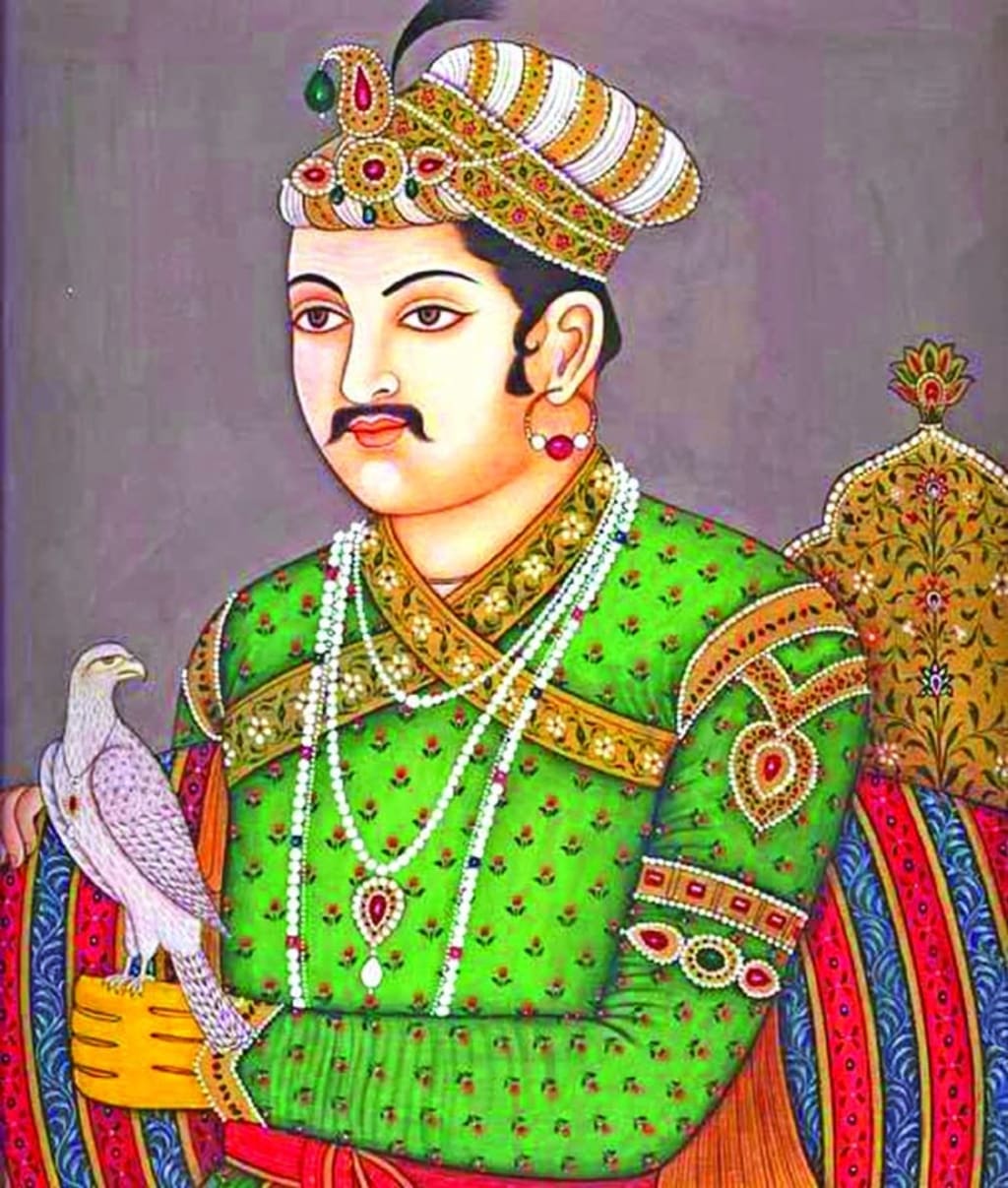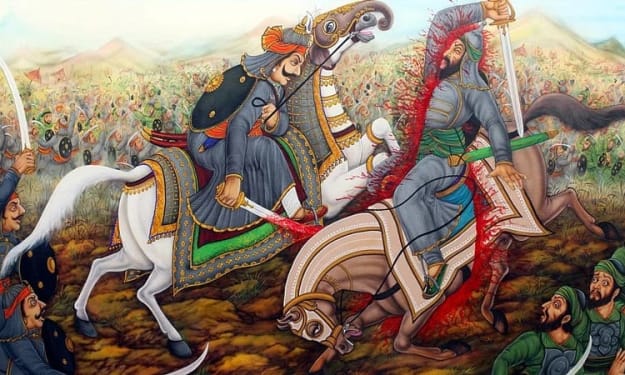Akbar The Great Biography
Akbar, in full Abū al-Fatḥ Jalāl al-Dīn Muḥammad Akbar, (born October 15?, 1542, Umarkot [now in Sindh province, Pakistan]—died c. October 25, 1605, Agra, India), the greatest of the Mughal emperors of India. He reigned from 1556 to 1605 and extended Mughal power over most of the Indian subcontinent.

Jalaluddin Muhammad Akbar, more famously known as Akbar the Great, was the third emperor of the Mughal Empire, after Babur and Humayun. He was the son of Nasiruddin Humayun and succeeded him as the emperor in the year 1556, at the tender age of just 13. Succeeding his father Humayun at a critical stage, he slowly enlarged the extent of the Mughal Empire to include almost all of the Indian sub-continent. He extended his power and influence over the entire country due to his military, political, cultural, and economic dominance. He established a centralised system of administration and adopted a policy of marriage alliance and diplomacy. With his religious policies, he won the support of his non-Muslim subjects as well. He was one of the greatest emperors of the Mughal dynasty and extended his patronage to art and culture. Being fond of literature, he extended support to literature in several languages. Akbar, thus, laid the foundations for a multicultural empire during his reign.
Early Life & Childhood
Akbar was born as Abu'l-Fath Jalal ud-din Muhammad at the Umerkot fort in Sind on October 15, 1542. His father Humayun, the second emperor of the Mughal dynasty was in flight after his defeat in the battle of Kanauj (in May 1540) at the hands of Sher Shah Suri. He and his wife Hamida Banu Begum, who was pregnant at that time, was granted refuge by the Hindu ruler Rana Prasad. As Humayun was in exile and had to move constantly, Akbar was brought up at the household of his paternal uncles, Kamran Mirza and Aksari Mirza. Growing up he learnt how to hunt and fight using various weapons, shaping up to be the great warrior who would be the greatest emperor of India. He never learned to read and write during his childhood, but that did not diminish his thirst for knowledge. He would often ask to be read about art and religion.
Quest for Power: Second Battle of Panipat
At the time of his ascent to the Mughal throne, Akbar’s empire encompassed Kabul, Kandahar, Delhi and parts of Punjab. But the Afghan Sultan Mohammad Adil Shah of Chunar had designs on the throne of India and planned to wage war against the Mughals. His Hindu general Samrat Hem Chandra Vikramaditya or Hemu in short, led the Afghan army to capture Agra and Delhi soon after Humayun’s death in 1556. The Mughal Army faced a humiliating defeat and they soon receded with their leader, Commander Tardi Baig absconding. Hemu ascended the throne on October 7, 1556 and established Hindu rule in North India after 350 years of Muslim Imperialism.
Crushing the Opposition
The Second battle of Panipat marked the beginning of the Glory days for the Mughal reign in India. Akbar sought out to end Afghan sovereignties that might be claimant for the throne in Delhi. Hemu’s relatives were captured and imprisoned by Bairam Khan. Sher Shah’s successor, Sikander Shah Sur was driven out from North India to Bihar and was subsequently compelled to surrender in 1557. Another Afghan contender to the throne, Muhammed Adil was killed in a battle the same year. Others were compelled to flee Delhi and neighbouring regions to seek refuge in other states.
Military Expansions
Akbar dedicated the first decade of his rule towards expanding his empire. Under the regency of Bairam Khan, Ajmer, Malwa and Garhkatanga were annexed into the Mughal territories. He also captured Lahore and Multan, major centers of Punjab. Ajmer brought him the doorway to Rajputana. He also claimed the Gwalior fort from the Sur Rulers. He conquered Gondwana in 1564 from the minor ruler Raja Vir Narayan. Akbar’s forces met a formidable opponent in the young King’s mother, Rani Durgavati, a Rajput warrior queen. On being defeated Durgavati committed suicide while Vir Narayan was slain during the capture of Chauragarh fortress.
Architecture and Culture
Akbar commissioned the building of several forts and mausoleums during his reign and established a distinct architectural style that has been dubbed as Mughal architecture by connoisseurs. Among the architectural marvels commissioned during his rule are the Agra Fort (1565–1574), the town of Fatehpur Sikri (1569–1574) with its beautiful Jami Masjid and Buland Darwaza, Humayun’s Tomb (1565-1572), Ajmer Fort (1563-1573), Lahore Fort (1586-1618) and Allahabad Fort (1583-1584).





Comments
There are no comments for this story
Be the first to respond and start the conversation.